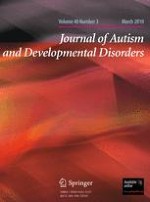01-03-2010 | Original Paper
Emotion Recognition in Children with Autism Spectrum Disorders: Relations to Eye Gaze and Autonomic State
Gepubliceerd in: Journal of Autism and Developmental Disorders | Uitgave 3/2010
Log in om toegang te krijgenAbstract
Respiratory Sinus Arrhythmia (RSA), heart rate, and accuracy and latency of emotion recognition were evaluated in children with autism spectrum disorders (ASD) and typically developing children while viewing videos of faces slowly transitioning from a neutral expression to one of six basic emotions (e.g., anger, disgust, fear, happiness, sadness, and surprise). Children with ASD were slower in emotion recognition and selectively made more errors in detecting anger. ASD children had lower amplitude RSA and faster heart rate. Within the ASD group, children with higher amplitude RSA recognized emotions faster. Less severe ASD symptoms and increased gaze to the eye region in children with ASD were related to more accurate emotion recognition.
